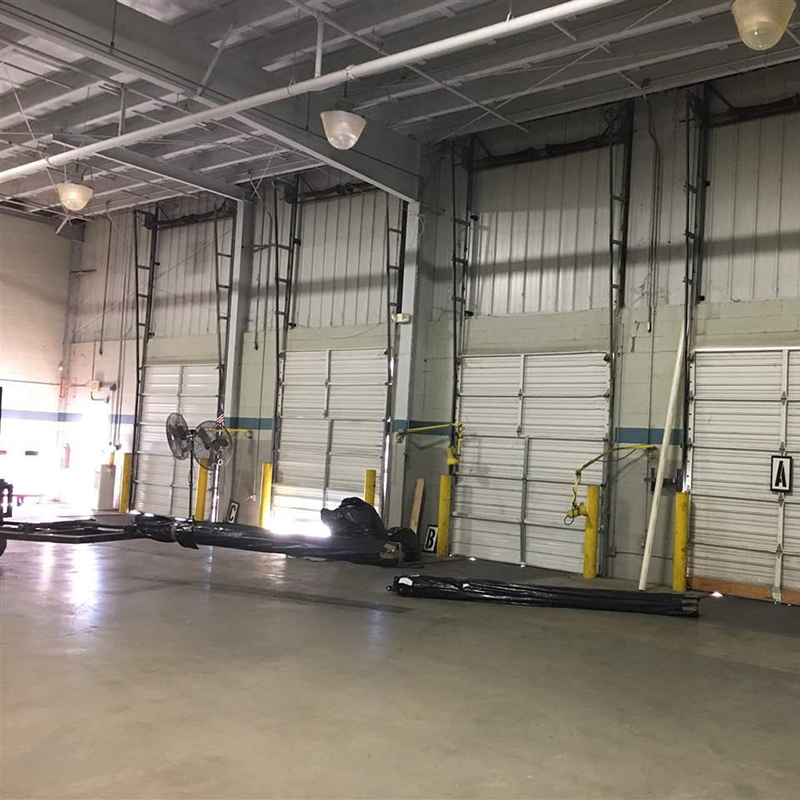1、 Preheating before welding, preheating before welding and heat treatment after welding are very important to ensure welding quality.The welding of important components, alloy steel and thick parts requires preheating before welding.The main functions of preheating before welding are as follows:
1)Preheating can slow down the cooling rate after welding, which is conducive to the escape of diffusive hydrogen in weld metal and avoid hydrogen induced cracking.At the same time, the hardening degree of weld and HAZ is reduced, and the crack resistance of welded joint is improved.
Steel structure welding
2)Preheating can reduce welding stress.Uniform local preheating or overall preheating can reduce the temperature difference (also known as temperature gradient) between the welded parts.In this way, on the one hand, the welding stress is reduced, on the other hand, the welding strain rate is reduced, which is conducive to avoid welding cracks.
3)Preheating can reduce the restraint of welded structure, especially for fillet joint. With the increase of preheating temperature, the incidence of cracks decreases.
The selection of preheating temperature and interlayer temperature is not only related to the chemical composition of steel and welding rod, but also related to the rigidity of welding structure, welding method and environmental temperature, which should be determined after considering these factors comprehensively.In addition, the uniformity of preheating temperature in the direction of steel plate thickness and in the weld area has an important impact on reducing welding stress.The width of local preheating shall be determined according to the restraint degree of the weldment to be welded. Generally, it shall be three times of the wall thickness around the weld area, and shall not be less than 150-200 mm.If the preheating is not uniform, it will not reduce the welding stress, but will increase the welding stress.
Welding of steel structure engineering
2、 There are three purposes of post weld heat treatment for steel structures: hydrogen elimination, welding stress relief, and improvement of weld microstructure and comprehensive properties.
Post weld hydrogen elimination treatment refers to the low-temperature heat treatment conducted when the weld is not cooled to below 100 ℃ after welding.The general specification is heating to 200 ~ 350 ℃ for 2-6 hours.The main function of post weld hydrogen elimination treatment is to accelerate the release of hydrogen in weld and heat affected zone, which is very significant to prevent welding cracks in low alloy steel welding.
In the welding process, due to the nonuniformity of heating and cooling, as well as the restraint or external restraint of the component itself, welding stress will always occur in the component after welding.The existence of welding stress in the component will reduce the actual bearing capacity of the welded joint area, produce plastic deformation, and even lead to the failure of the component.
Welding of steel structure engineering
Stress relieving heat treatment is to reduce the yield strength of the welded workpiece at high temperature to relax the welding stress.There are two common methods: one is high temperature tempering, that is to put the whole weldment into the heating furnace, slowly heat it to a certain temperature, then keep it for a period of time, and finally cool it in the air or furnace.This method can eliminate 80% – 90% of welding stress.The other method is local high temperature tempering, that is, only heating the weld and its surrounding area, and then cooling slowly to reduce the peak value of welding stress, so that the stress distribution is relatively gentle, so as to partially eliminate the welding stress.
After welding some alloy steel materials, their welded joints will appear hardened structure, which makes the mechanical properties of the materials deteriorate.In addition, this kind of hardened structure may lead to the destruction of the joint under the action of welding stress and hydrogen.After heat treatment, the metallographic structure of the joint is improved, the plasticity and toughness of the welded joint are improved, and the comprehensive mechanical properties of the welded joint are improved.
Post time: Aug-31-2020

